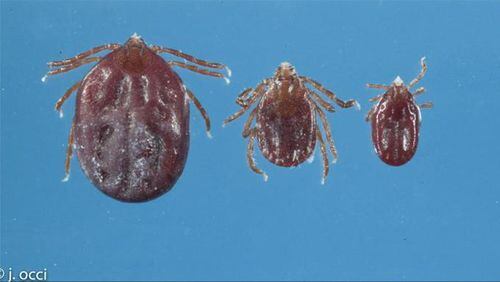A new invasive tick species has been confirmed in Pennsylvania for the first time, just weeks after agriculture officials found one in North Carolina.
According to the Pittsburgh Tribune-Review, recent testing found an Asian longhorned tick on a deer in Pennsylvania's Centre County, where Penn State is.
This particular species is tough to tell apart from others.
As the name suggests, they have horns, but they're so tiny that you can't see them without a microscope.
The discovery is not good news for Pennsylvania’s already bad tick problem.
The deer ticks that are prevalent in Pennsylvania are carriers of Lyme disease, and Pennsylvania has consistently had the most cases of Lyme disease in the country.
These Asian ticks haven't been found to carry Lyme yet, but scientists are concerned they could.
Scientists say the tick does carry a disease that has infected hogs and cattle in Asia, but they have not found any disease-carrying "longhorns" in the United States.
The Asian ticks, which made their first U.S. appearance in New Jersey last year, have since been found in several other states, such as Arkansas, New York, Virginia, West Virginia and North Carolina, the Tribune-Review reported.
Efforts to eradicate the ticks have failed.
The female ticks can reproduce asexually and can lay up to 2,000 eggs after feeding on a single host.
– The Cox Media Group National Content Desk contributed to this report.
About the Author






